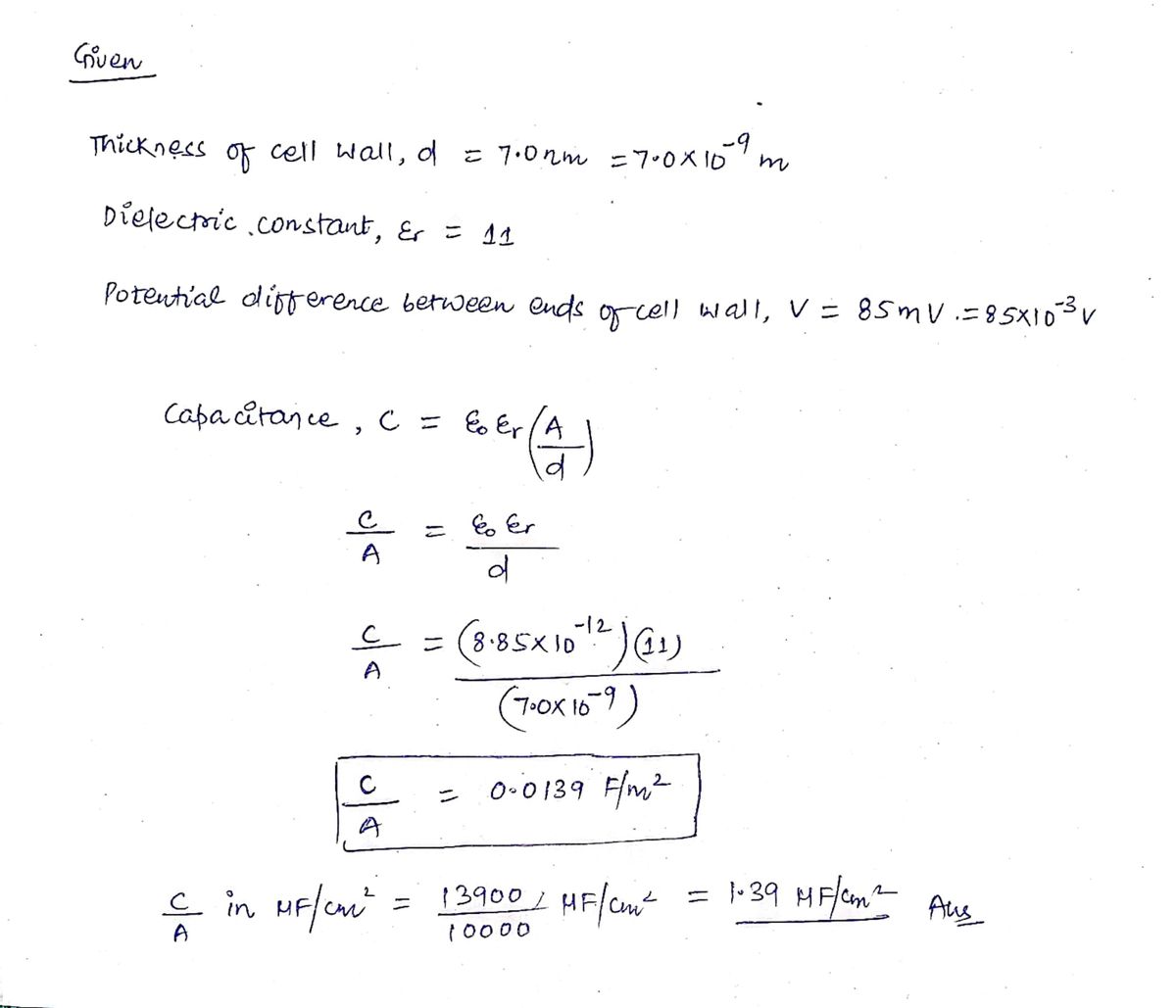Cell membranes (the walled enclosure around a cell) are typically about d = 7.0 nm thick. They are partially permeable to allow charged material to pass in and out, as needed. Equal but opposite charge densities build up on the inside and outside faces of such a membrane, and these charges prevent additional charges from passing through the cell wall. We can model a cell membrane as a parallel-plate capacitor, with the membrane itself containing proteins embedded in an organic material to give the membrane a dielectric constant of about 11. (See (Figure 1).) For related problem-solving tips and strategies, you may want to view a Video Tutor Solution of Effect of a dielectric. Figure + d < 1 of 1 Outside axon + + + + + + + + Axon membrane Inside axon > ▼ Part A What is the capacitance per square centimeter of such a cell wall? Express your answer in microfarads per squared centimeter. 15| ΑΣΦ C = Submit ▾ Part B Request Answer E = a Submit Request Answer PRE ? In its normal resting state, a cell has a potential difference of 85 mV across its membrane. What is the electric field inside this membrane? Express your answer in volts per meter. IVE ΑΣΦ 3 μF/cm² ? V/m
Dielectric Constant Of Water
Water constitutes about 70% of earth. Some important distinguishing properties of water are high molar concentration, small dissociation constant and high dielectric constant.
Electrostatic Potential and Capacitance
An electrostatic force is a force caused by stationary electric charges /fields. The electrostatic force is caused by the transfer of electrons in conducting materials. Coulomb’s law determines the amount of force between two stationary, charged particles. The electric force is the force which acts between two stationary charges. It is also called Coulomb force.
I am stuck on this physics homework, any help would be great!


Trending now
This is a popular solution!
Step by step
Solved in 2 steps with 2 images









